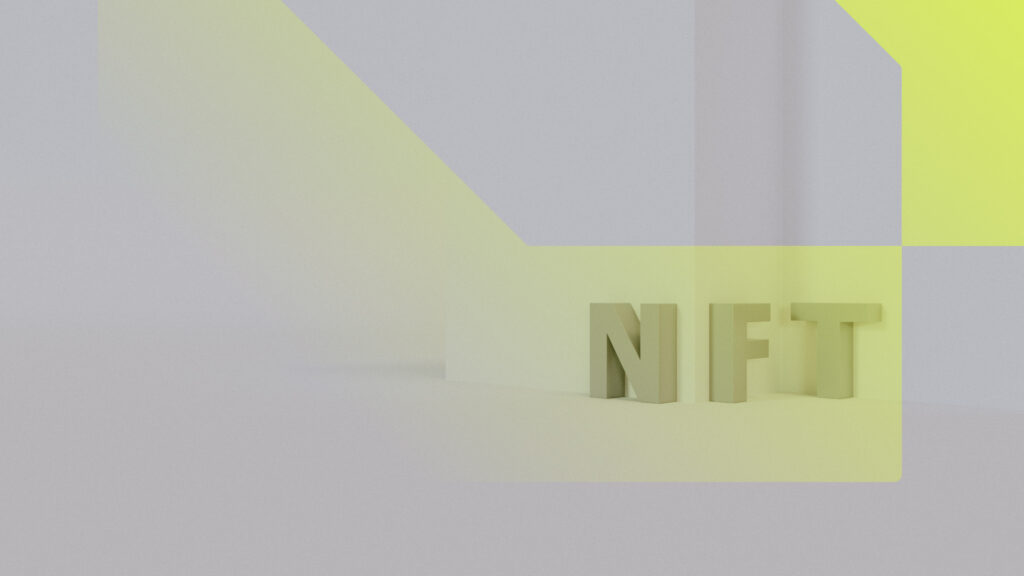In the ever-changing world of digital assets, there’s a simple truth: NFTs without a purpose are basically worthless. As NFTs continue to make waves and redefine ownership, one key factor sets apart the impactful from the forgettable – utility. Just like a strong foundation supports a tall building, utility gives NFTs a solid footing, turning them from a short-lived hype into powerful tools for creativity, connection, and progress.
In this article we will take a look at the different types of utility an NFT can have and how this contributes to the value of an NFT.
Key takeaways
- NFTs derive their value from the utility they provide, rather than having an inherent value
- Utility in NFTs can come in many forms, such as digital art and collectibles, memberships and access, loyalty rewards, asset ownership, and more
- The value of an NFT is affected by (changes) in the value of the underlying utility. As the utility evolves, the value of the NFT may fluctuate, emphasising the importance of assessing long-term viability and potential growth
- The ecosystem in which an NFT resides is a key contributor to its success or failure
Understanding NFTs and their characteristics
To understand what gives an NFT value it is important to first take a look at what NFTs are exactly. In essence, an NFT is nothing more than a certain token on a certain blockchain that holds some data. This token can be sold, held, and traded, and whatever data it holds is up to its creator. This should make it obvious that the NFT itself has no inherent value. Its value comes from the utility the creator or community attaches to it.
But what does utility mean in this context? It means that the NFT should give the holder the ability to do something with it in a specific ecosystem, ranging from utility in a big metaverse to utility in a small restaurant. And the specific utility can be very broad as well, ranging from the ability to use a tokenised in-game item in a certain game, to gaining exclusive access to a certain event. And since everything is easily verifiable and accessible on a blockchain, anybody or any ecosystem can add utility to (a certain set of) NFTs at any time. Tomorrowland NFT holders could for example get special discounts on Lollapalooza tickets. This ability to add a diverse range of utilities to an NFT, along with easily verifiable ownership and their transparent nature has opened up many opportunities.
Now you have a better understanding of what gives an NFT value and what utility in an NFT context means, let’s take a look at different kinds of utility that can be attached to an NFT.

Different types of NFT utility
As already mentioned, NFTs can get their value from a variety of different types of utility. We have summarised the 4 main types of NFT utility and will describe each of them below:
- Ability to collect
- Providing access
- Rewarding loyalty
- Asset tokenisation
Ability to collect
One of the key ways NFTs gain value is through collecting and owning digital art and collectibles. It’s a lot like the joy people get from collecting physical things, whether it’s art, cards, or other treasures. But with NFTs, there’s a modern twist – they live on the blockchain. Think of it like owning a piece of digital art that’s securely stored online. This similarity brings a similar kind of fun – the excitement of collecting, the satisfaction of completing a set, or having something really unique. Plus, NFTs can also be seen as investments, with their prices going up and down over time. And, there’s a social aspect too. Collectors can connect with each other, just like people who share a love for collecting physical items.
The blockchain part makes digital collecting even cooler. Even though you can’t hold NFTs like physical objects (although you can display your NFTs in a digital frame!), you can easily prove they’re real, trade them with others from anywhere in the world, and even use them in different online places, like games. Furthermore, the digital world opens up new opportunities. It gives you a chance to do things with your collectibles that would not be possible in the ‘real world’, like combining and staking your collectibles.
In some cases, an NFT can also represent a digital twin of a physical and tangible item, further blurring the boundaries between the digital and physical worlds. However, we will explain this further in the asset tokenisation section below.
Providing access
Another way NFTs bring value is by providing access. This can be access to anything, ranging from access to a certain membership, to a certain subscription, or perhaps access to exclusive events or experiences.
These kinds of NFTs come in various shapes and sizes, ranging from membership NFTs offered by the famous Tomorrowland festival, which give holders access to exclusive raffles, tours, festival tickets, and more, to NFT subscription boxes which give holders special NFTs on a monthly basis. Another great example are the Bored Ape Yacht Club NFTs, which essentially serve as entry tickets to the BAYC ecosystem.
Within this category of NFTs the specific utility that an NFT offers varies a lot depending on the party offering the NFT. However, it always boils down to specific access in a certain way.
Rewarding loyalty
Unlike NFTs focused on providing utility by providing certain access that are typically bought, loyalty reward NFTs are earned, typically through ongoing engagement. The utility lies in the added value they bring to holders’ experiences, creating a sense of exclusivity and pride among the loyal community. And for businesses, it is an innovative way to leverage web3 technologies to increase customer loyalty.
The adoption of NFTs for loyalty rewards introduces numerous advantages over traditional loyalty programs. Unlike conventional loyalty schemes that are often limited to a single company, NFT-based loyalty programs have the potential to facilitate collaborations between multiple businesses. For example, multiple businesses in a certain area, or various businesses in the same industry. This opens the door to more diverse and appealing rewards that can be redeemed within a broader ecosystem, further enhancing customer loyalty and satisfaction.
Moreover, NFT loyalty rewards bring a higher level of flexibility. Unlike traditional loyalty points or perks, NFTs are tradable assets, enabling customers to access a marketplace where they can buy, sell, or exchange rewards. This feature empowers customers to maximise the value of their loyalty programme participation. Unwanted or duplicate rewards can be converted into money or points, granting customers greater control over their loyalty benefits.
With increased adoption of NFTs in loyalty programs, customers are set to enjoy richer, more personalised experiences, while companies benefit from heightened brand loyalty and deeper customer relationships. And in terms of utility, the better the rewards, the greater the utility of loyalty reward NFTs for customers and companies alike.
Asset tokenisation
The last type of utility is by far the broadest category and it refers to the ability to tokenise any asset, either physical or digital, and tangible or intangible. This asset usually already has a certain type of utility, but by using NFTs to tokenise them they get even greater utility.
We will take a deeper look at how that works and what is possible. It is important to first understand the difference between the tokenisation of an asset using fungible tokens, or non-fungible tokens (NFTs). Let’s take a hotel as an example. Let’s say you want to tokenise the hotel rooms of a hotel, and want token holders to receive part of the revenue that these hotel rooms generate. One of the ways in which that could be done is using fungible tokens. In this case you could create a certain amount of tokens, for example 1000, and then every token would receive 1/1000 of the total revenue from the hotel rooms. This is an example of using fungible tokens to tokenise something.
Another way in which this could be done is by tokenising each specific room. In this case, every token would be unique and represent a specific room in the hotel. Each token would then earn (part of) the revenue generated by the room represented by the NFT they hold. This is an example of using non-fungible tokens to tokenise something, and what we will focus on in this section.
The utility of tokenised assets extends far beyond their non-tokenised counterparts. By leveraging NFTs, these assets can unlock numerous advantages, such as fractional ownership, granting more people access to valuable assets, increased liquidity as they can be easily traded on various marketplaces. As well as heightened transparency through the immutable nature of the blockchain, and reduced transaction costs compared to traditional intermediaries. And in addition to these points, the underlying asset, as well as any rights or claims tied to the NFT, are of course key in determining its value and utility.
Conclusion
NFTs have emerged as a game-changer in the digital world, thanks to their wide applicability. Furthermore, their value lies in their utility, and this utility can be anything, ranging from the ability to collect to providing access to a wide range of experiences, subscriptions, and memberships.
In the ever-evolving NFT landscape, the value of these digital assets hinges on the ecosystem in which they reside. A focus on tangible utility and long-term viability is critical to weather market fluctuations and ensure sustained success. As the market matures, NFTs continue to expand into new industries, creating unique opportunities for creators, collectors, and businesses.
The transformative potential of NFTs is boundless, offering novel ways to interact with and monetise digital content, democratise ownership of valuable assets, and to foster deeper connections between brands and their customers. As time moves forward, the fusion of creativity, technology, and utility in the NFT space promises to reshape ownership paradigms and unlock endless possibilities in the digital age. Embracing this transformative potential, we step into an era where NFTs redefine value, ownership, and the way we engage with the digital world.




